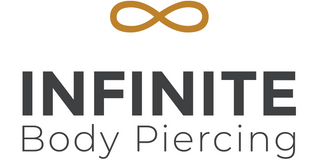
Surface Piercing FAQ

Can a surface barbell be put anywhere?
Yes. The problem is not finding a location where it can be placed, but finding a place where the piercing will heal. In order for a surface piercing to heal, the area must be relatively flat and not distort with the body’s motion. The most popular area for surface bars are the back of the neck (also known as a “nape” piercing), horizontally below the navel, and certain areas on the face. For most other areas, surface anchors are a better solution.
What about Tygon and PTFE?
Over the years, as piercers have experimented with surface piercings, one of the solutions was flexible jewelry—either Tygon® tubing or PTFE. However, there are various issues with this approach (e.g. Tygon should be replaced in a piercing every few months), and today most piercers prefer surface bars, as they put less pressure on the exit points of the piercing and therefore have a lower chance of rejection.
What is rejection?
Rejection is when your body treats your jewelry as an irritant and decides to push it out, or “reject” it. (This is the same way your body deals with a splinter or glass shard embedded in the skin.) With surface piercings, the warning signs are a thinning of the tissue around the posts, with the skin becoming red, shiny, or calloused—especially toward the center between the exit points. If the jewelry is close enough to the surface you may actually be able to see the jewelry through the skin.
If you think your piercing is rejecting, see your piercer immediately. Waiting too long to remove the jewelry can make skin discoloration and scarring even more severe. And if in doubt, stop by the shop anyway; one of our piercers can take a look at it and see if it needs to be removed.
How badly does it scar afterward?
As with any piercing, there will likely be a scar when you remove the jewelry. Scars are typically minimal when the piercing is removed while happy and healthy, but if you wait to take out the piercing until it migrates, the scar tissue can be more extreme and unsightly. If your piercing is starting to reject, early removal is usually your best option to minimize scarring. (For more information about scarring, infections, and irritations, click here.)
Can I go swimming?
It is best to avoid swimming for the full duration of the healing period. The risk to your piercing depends on where you’re swimming: saltwater and chlorine may be okay for your piercing, however, other bacteria in the water may be problematic; the water on a beach in the tropics is not the same at the water at the Jersey Shore; and you can never be sure how balanced the chemical levels are in anyone else’s pool—or what else may be in the water. Definitely avoid hot tubs, quarries, or lakes, as here the water quality is even more questionable. At a minimum, plan to avoid swimming for at least three months, and if you do swim during the healing process, the most important thing to do is to make sure that you clean your piercing afterward.
















